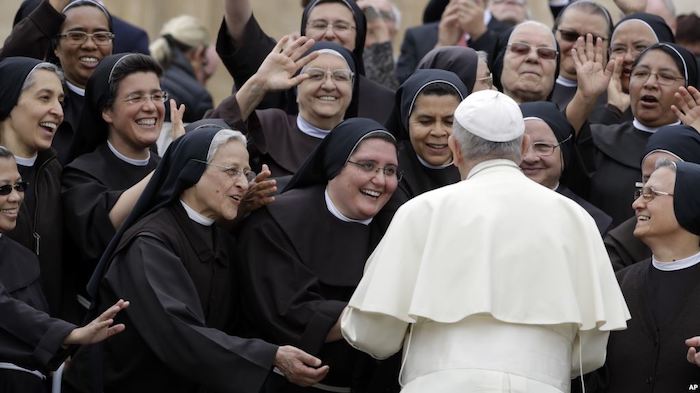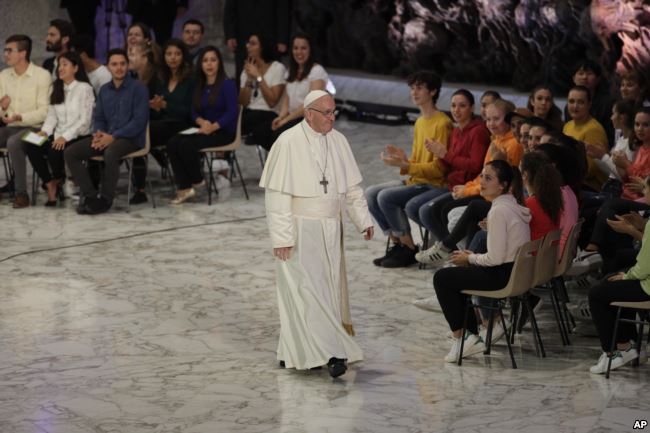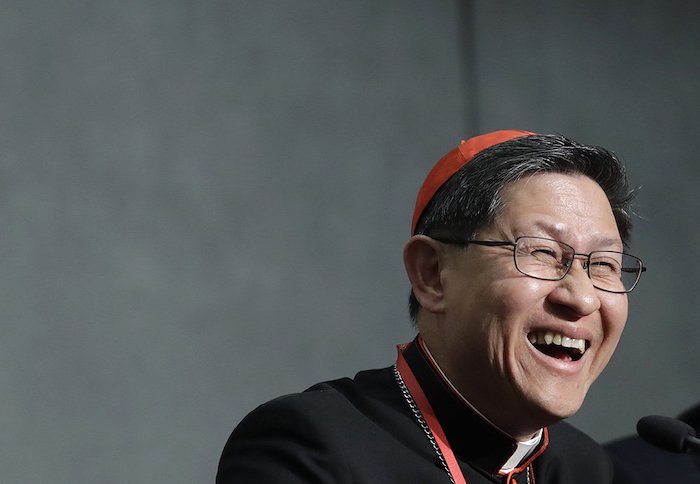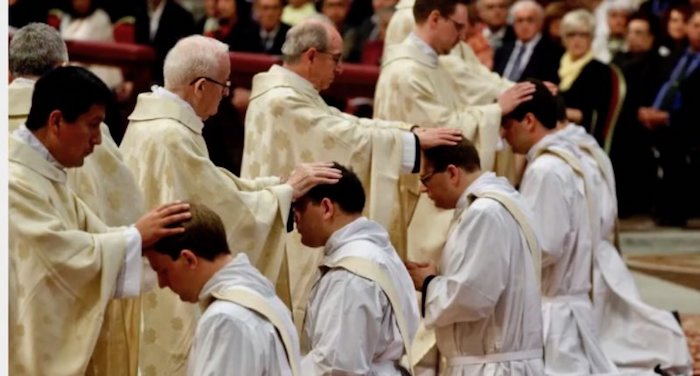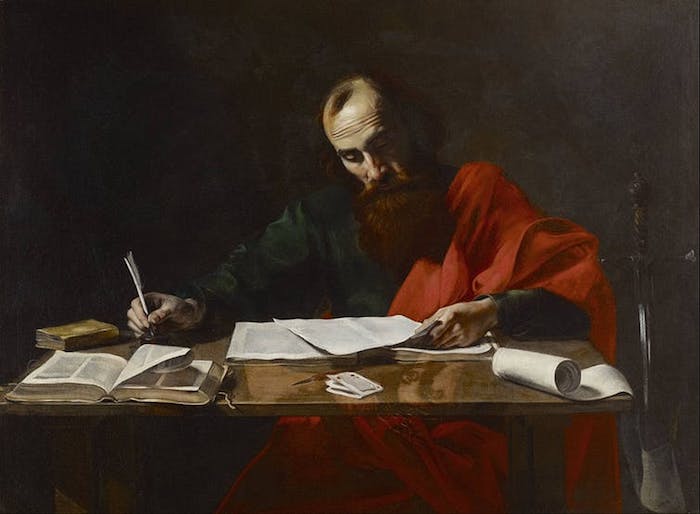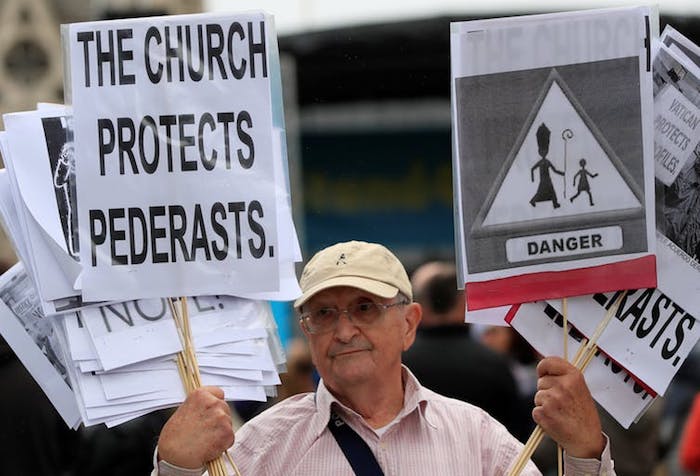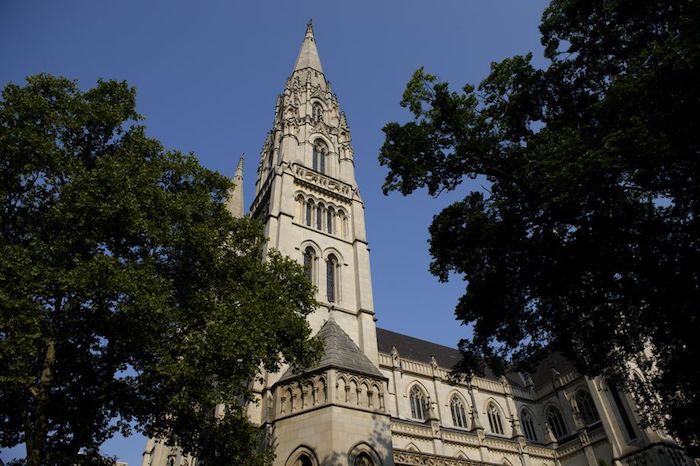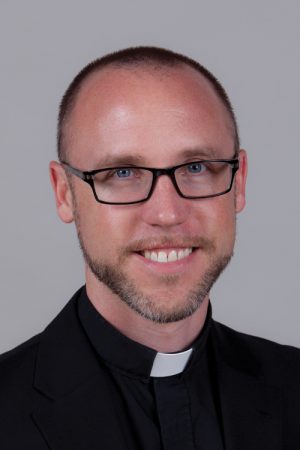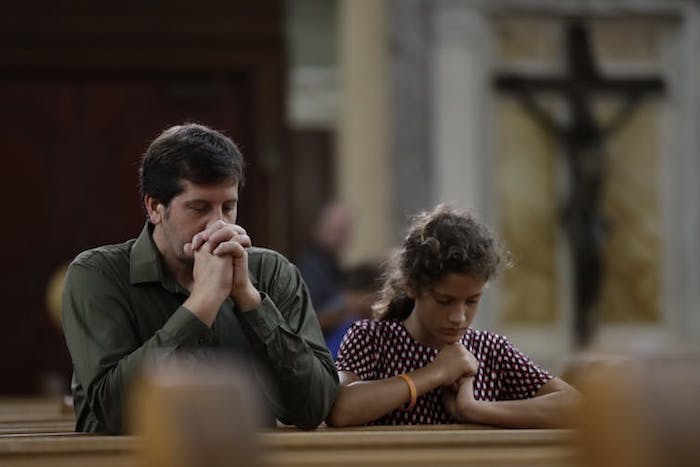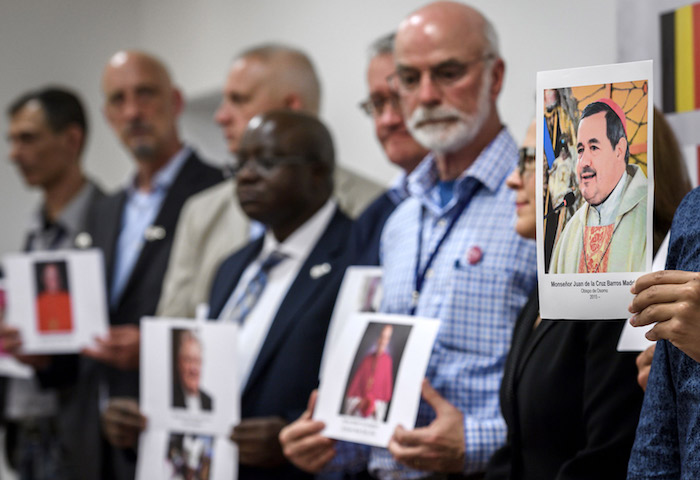Clericalism, Not Heresy, Caused the Crisis
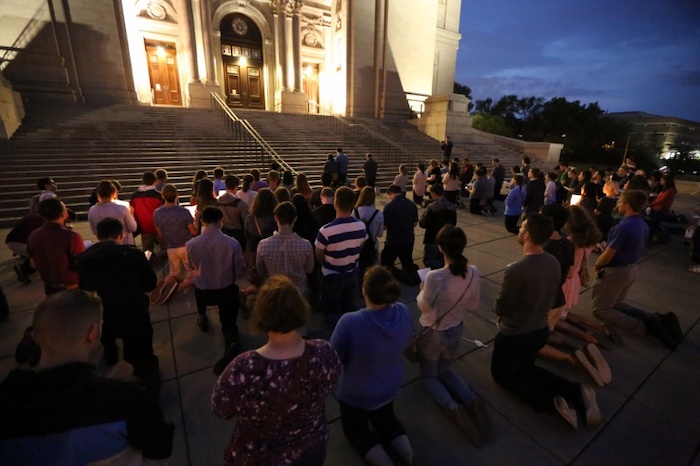
Ten years ago, I believed a myth. In the beginning, there was Vatican II. It was good but messy, and the Bad Catholics hijacked it to undermine doctrine. They took over seminaries and turned them into cesspools where heresy was mandatory and depravity rampant. Then Pope John Paul II came along. He drove out the Bad Catholics and cleaned up the seminaries. Too late! The Bad Catholics had already committed terrible crimes, which were covered up without the pope’s awareness. In 2002, their abuses exploded into public view, and the JPII Catholics got blamed for crimes committed by a dying generation of clerics. The JPII bishops took it on the chin, but they fixed the problem with the Dallas Charter. Then Benedict XVI, the great theologian, appointed orthodox bishops who would carry forward the renewal. The horrors of the Scandal were behind us. The two primordial forces of the postconciliar church, orthodoxy and heresy, had fought a great battle, and orthodoxy had been vindicated.
My diocese, the Archdiocese of Saint Paul and Minneapolis, was proof. In the 1980s, we were led by Archbishop John Roach. Appointed by Pope Paul VI, Roach fit the “Spirit of Vatican II” archetype to a tee. Under Roach, Saint Paul Seminary was taken over by dissenters, one of whom described the Eucharist as “cookie worship” that he had “moved beyond.” There were open homosexual affairs. Those who dared adhere to church teaching were punished.
Saint Paul soon experienced one of the first abuse scandals in the American church. For years, Roach and his cronies had secretly shuffled abusive priests between parishes. When this came out and the diocese was sued, Roach found himself under oath, where he became conveniently forgetful. The diocese lost, with the victim awarded $3.5 million—paltry by today’s standards, but shocking at the time. In response, Roach imposed “tough policies,” which won praise from newspapers. Privately, he declined to enforce them.
Finally, in 1995, Roach retired. John Paul the Great—as we called him—appointed Archbishop Harry Flynn. Flynn was a kindly Irishman with an adorable accent. He came from the Diocese of Lafayette, where he’d handled another early abuse scandal. He’d healed the victims of Lafayette, and he’d largely written the USCCB’s new abuse policy. Flynn was a JPII man. He loved prayer and took strong stands. He turned the feeble St. John Vianney College Seminary into the biggest minor seminary in the country. After Archbishop Flynn’s arrival, the sex-abuse story finally faded from the headlines. We were so proud when Flynn led the American church in drafting the Dallas Charter.
In 2008, Pope Benedict appointed Archbishop John Nienstedt, an orthodox leader who led the campaign against redefining marriage in Minnesota. While much of the country was roiling from Boston and its aftershocks, we enjoyed a palpable sense of peace. The Good Catholics had saved Vatican II from the Bad Catholics, and our Charter would keep it from happening again.
Our myth—their lie—collapsed in 2013. Archbishop Flynn was no healer, we learned. He was the USCCB’s damage-control guy. In 1986, Flynn went to Lafayette and killed the bad publicity. He said he’d visited all the families of the abused there. He hadn’t. He said he’d got the abusers out of ministry. He hadn’t. He got the media to think he had, but focused on getting the records sealed by court order. The scandal went quiet—but it was the quiet of a muzzle, not of healing.
When Flynn came to Minnesota, he did the same. We pew-sitters were led to believe the scandal ended here because Flynn’s policies solved the problem. In fact, it ended because Flynn’s legal team convinced a court that Minnesota’s statute of limitations on sex crimes barred most lawsuits. Flynn drafted the Dallas Charter, but he never bothered much with following it. In 2004, the diocese found pornographic images on Fr. Jonathan Shelley’s computer. To some, it seemed to be child porn; others considered it only “borderline illegal.” The borderline caucus won, and Flynn kept Shelley in ministry. That same year, Fr. Daniel Conlin provided marriage counseling to two of his parishioners, then fathered a child with the wife. Flynn removed Conlin from the parish…and transferred him to the marriage tribunal, where he came into contact with more vulnerable women. All of this and more was covered up.
Archbishop Nienstedt mostly continued the lax practices of his predecessors. While more proactive than Flynn, Nienstedt still fell far short of church policy and law. Nienstedt made one excellent choice: he appointed Chancellor Jennifer Haselberger, a canonist devoted to interpreting ecclesial law as written—not bending it to favor Roman collars. When Haselberger rediscovered Fr. Shelley’s “borderline illegal” porn in 2011 and showed Nienstedt, chancery officials spent more than a year debating what to do, instead of just calling the police. As similar cases mounted, Haselberger resigned and blew the whistle.
Our beloved myth exploded. Twin Cities Catholics like me came face-to-face with an unpleasant fact: the orthodox Good Clerics hadn’t taken over from the Bad “Spirit of Vatican II” Clerics and cleaned house. The Good Clerics were buddies with the Bad Clerics. They did everything in their power to protect the Bad Clerics—even violating moral, civil, and canon law on their behalf. We’d believed there were two sides in the Church: orthodoxy and heresy. We often cheered for the clerics on our “team” and booed the other guys. But we were wrong. Everyone in the chancery was working together…against us.
I know there are good priests. There may even be good bishops. But don’t trust your instincts. I knew most of the people in our diocesan crisis. Reading the depositions, I saw old family friends pitted against each other. My childhood babysitter called the priest who used to be so sweet to us kids at the big parties a liar and an obstructionist. The man I worked for in college closed ranks with my wife’s childhood pastor to protect the priest who celebrated my wedding from the scrutiny of my alma mater. I never saw any of this coming. Their orthodoxy (or lack thereof) had nothing to do with it. My judgment of their character (or lack thereof) missed the mark. There was only one consistent pattern: the closer they were to power, the more my shepherds collaborated to keep the sheep deaf, dumb, and victimized.
One could blame all this on some kind of network of unchaste priests and their allies, who supposedly work to shield one another from accountability while undermining Catholic teaching on sexuality—a so-called “lavender mafia.” Or one could blame it all on clerical celibacy and sexual repression. A rumor circulated for years that Archbishop Nienstedt cruised for gay sex and punished priests who refused his advances. Most of us scoffed at this rumor as an obvious smear. But a 2014 investigation into Nienstedt’s past revealed so much evidence that Auxiliary Bishops Piché and Cozzens concluded Nienstedt should resign and immediately flew to Washington to confer with papal nuncio Carlo Viganò. Instead, the nuncio ordered the investigation be drastically narrowed. (Viganò fiercely disputes suggestions that this was tantamount to ending the investigation.) Fr. Christopher Wenthe, while serving as my associate pastor, told a vulnerable woman about the difficulties of his vow of celibacy, just before abusing her in my childhood parish’s rectory. Yet when A. W. Richard Sipe articulated how a priestly culture of secret unchastity created space for child abuse, people like me dismissed him as an anti-Catholic kook.
So, yes, in our scandal, as in many others, you can point to some malefactors who fit the “heresy” narrative and others who fit the “repression” explanation. But there are many more who don’t fit either. I’ve never heard anyone suggest that Archbishop Flynn was unchaste, yet his indifference toward victims was depraved. Likewise the nuncio. Vicar General Peter Laird was an up-and-coming communications-savvy “John Paul II” priest, an exemplar of the new generation. Yet, like so many other chancery clerics (the “transitional presbyterate,” as Haselberger memorably put it), Laird consistently downplayed the risks of keeping problem priests in circulation.
They were Team Chancery. We were Team Lay. They played to win.
Modern priests live with priests, learn with priests, work with priests, die with priests. They’re expected to form no permanent ties with any single parish or community, because reassignment looms. They vow celibacy, so other clerics become their (dysfunctional) family. The bishop can cut their pay, give them vacation, reassign them to Siberia, put them up for promotion…anything, for any or no reason, without recourse. Priests have relatively few rights, often lack means to exercise them, and are conditioned in seminary to accept indignities, even evil, as “holy obedience.” Absolute power over priests corrupts the bishops, and absolute submission does no favors to priests.
Theoretically, the Holy See is supervising, but there are more than three thousand ordinaries reporting directly to the pope. I don’t know about you, but in my workplace no one person is allowed to manage more than a dozen direct reports. More than that, and management becomes distracted and ineffective. With so much on its plate, Rome won’t intervene, and probably won’t even notice, unless someone is convicted of a crime. Besides, a few well-cultivated contacts in today’s Rome will get you a lot further up the career ladder than holiness. Power flows from the top of the hierarchy down through overt and covert cliques. Powerful clerics are accountable to those cliques, not to the faithful. The laity are needed only for their wallets.
The structure I have just described could hardly be better at catalyzing abuse. Look at Cardinals Egan and McCarrick. One was considered conservative, the other liberal, but both were notorious on abuse—and St. John Paul gave both the red hat. How about Cardinal Mahony and Cardinal Pell? Archbishops Finn, Wilson, and Bruskewitz? Or Cardinal Law, the great conservative prelate whose punishment was promotion? The same story unfolds today in Honduras, Chile, and Australia. Now we’ve learned from Pennsylvania that dozens of bishops, perhaps a cardinal, are implicated in a broad, deep, clerical conspiracy—a conspiracy that was well established years before my old scapegoats, Vatican II and the sexual revolution, were around to take the blame. This crisis was not caused by Marty Haugen tunes and the Land O’ Lakes statement. At the root of this crisis is structure—the particular way church governance has calcified in the past couple of centuries. That structure has to go.
Portions of the church’s structure are divinely instituted, so their reform is neither possible nor desirable. But most of the details were dreamed up by humans. Those can change. Consider the College of Cardinals. It evolved from political contingency, not scriptural necessity. Pope Francis could dismiss it tomorrow and ask half-a-dozen ordinary Catholics to choose his successor instead. Three consecutive papacies have run aground trying to reform the Curia, which grew in parallel with the College of Cardinals. Perhaps it is time for the Curia to simply dissolve.
Consider mandatory clerical celibacy. It’s only a thousand years old. As recently as 867, Pope Adrian II’s still-living wife and daughter accompanied him to the Lateran Palace upon his election. Or consider the seminary, den of so many recent iniquities. The modern, insular seminary was born at Trent, a mere five centuries ago.
Consider the auxiliary bishop, who “leads” the flock of a fictitious “titular see” while actually assigned to help another bishop lead his flock. This novelty was invented under Pope Leo X just before the Reformation. The idea of a bishop leading a non-existent see would have baffled the fathers of the church. But it helped dioceses get very, very big. In England, in 1086, the entire country had around 1.7 million residents, and, by my count, twenty dioceses: about 85,000 people per diocese. Today, the Archdiocese of St. Paul and Minneapolis alone has 3.1 million residents, of whom nearly 850,000 are Catholic. In medieval times, our diocese would be split into ten, twenty, even forty smaller dioceses, with scaled-down bishops who’d have no choice but to share “the smell of the sheep.” Instead, with help from the auxiliaries, the archbishop is able to run his unthinkably large and unaccountable archdiocese more like a corporation—a corporation desperate to protect its assets. And the Twin Cities is not even close to the worst of the mega-dioceses.
Consider, finally, the appointment of bishops. They have always required the consent of the pope, but have typically been selected by others. Bishops, especially in the patristic era, were often elected by their own dioceses or by their brother bishops (a practice that continues in the East). St. Ambrose was made bishop of Milan by acclamation of the laity before he was even baptized! Even in the nineteenth century, the first terna used by the pope to select American bishops came from the priests of the diocese. Direct papal selection, mainly on the advice of the nuncio and the Congregation of Bishops, is pretty new—and clearly isn’t working well. Among other things, the older system encouraged bishops to be promoted from within the diocese to serve the diocese for life. The new system sees far more bishops imported from a thousand miles away, then exported again when a job in a more prestigious diocese opens up.
I note these changeable things not to endorse any one of them in particular, but rather to make clear that structural change is possible. Moreover, some structural change is necessary. This crisis calls for radical changes like those of St. Gregory the Great. The mechanisms that turn clerics against their flocks cannot be broken otherwise. New policies, new preaching, and new personnel aren’t enough. They would help, but the Saint Paul Archdiocese is proof: if we do not reform the church’s fundamentally clericalist structure, the abuse scandal will just happen again, and again, and again.
Complete Article ↪HERE↩!

